- Home
- Tom Clancy
Battle Ready Page 38
Battle Ready Read online
Page 38
I believe that military force does not solve every problem, nor is it our only form of power. There are other kinds of pressure and other kinds of support. In order to achieve our national goals, we have to combine every capability in our national bag in the most artful mix possible. But that’s hard when the political infighting spills over into the implementation end of policy.
The Washington bureaucracy was too disjointed to make the vision of all the strategies, from the President’s to the CINCs’, a reality. There was no single authority in the bureaucracy to coordinate the significant programs we CINCs designed. The uncoordinated funding, policy decisions, authority, assigned geography, and many other issues separated State, Defense, Congress, the National Security Council, and other government agencies and made it difficult to pull complex engagement plans together.
To further complicate matters, the CINCs don’t control their own resources. Their budgets come out of the service budgets; and these are controlled by the Service Chiefs (who are also double-hatted as the Joint Chiefs), who, understandably, don’t want to give up their resources to the CINCs. The Service Chiefs have minimal interest in, and little insight into, engagement programs. They’re trying to run their services, and that job’s hard enough without other burdens. Their purpose and function is to train, organize, and equip forces for the CINCs, but what they actually want to do is provide these forces where, when, and how they see best. In other words, CINCs are demanding forces and resources for purposes that the Service Chiefs may not support. Thus the CINC is an impediment—and even a threat—and the rising power of the CINCs reduces the powers of the Service Chiefs. It’s a zero-sum game.
Looking at the problem from the other side, the CINCs see the Service Chiefs as standing in the way of what they desperately need; and they are frustrated by the chiefs’ inability to fully cooperate with them or support their strategies. The CINCs want to see their money identified and set aside in a specific budget line, so they know what they have. For all kinds of reasons, the Department of Defense is reluctant to do this.
The result is constant friction between the CINCs and Washington.
This is not a case of good guys and bad guys. The CINCs and the Service Chiefs are all fine men, doing the best jobs they can do. The Service Chiefs have a legitimate case. They’re responsible for training, organizing, and equipping their forces. The CINCs have a legitimate case. They’re responsible for employing or fighting their forces and for finding the resources to implement the President’s policies out in the world day to day. These two responsibilities don’t come together. The Washington bureaucracy has not been able to devise a coherent, cohesive way to make the system work.
This frustration was often voiced by the CINCs at their conferences in Washington, but to no avail. Washington issues and Service Chiefs’ issues seemed to take priority over the CINCs’ concerns.
I’D LIKE to suggest changes that might fix the system.
First, I would change the composition of the Joint Chiefs of Staff. I’d make them truly “joint.”
Currently, the Joint Chiefs are simply the Service Chiefs wearing another hat now and again during the week. They’re not really “Joint” Chiefs; they’re Service Chiefs. Their first priority is to look out for their own services. Most of them have had no real “joint” experience in actual joint operations.
A better way to select Joint Chiefs would be to create a separate body, choosing it from former Service Chiefs and former CINCs, after they’ve served their tours. That would allow people with top-level experience from both worlds to pull the system together.
Looking at this idea more closely, you obviously can’t have serving CINCs as Joint Chiefs of Staff. They’re already all over the world doing their thing. Service Chiefs likewise have a full-time job in Washington as Service Chiefs (though they’ll fight hard to keep their Joint Chiefs hats, because a lot of power comes with the job). But by selecting the Joint Chiefs of Staff out of the pool of former CINCs and former Service Chiefs, you would create a full-time dedicated organization without most of the temptations to which both CINCs and Service Chiefs can fall victim. Yet you would benefit from the enormous wealth of knowledge and experience they all represent. And they would be truly joint. This body would advise the Secretary of Defense, testify before Congress, and bring together all the relevant issues.
Two, where the CINCs’ resources and their engagement programs are concerned, I think we ought to bite the bullet and identify the money and set the budget for whatever we want to call engagement. It should be out there, transparent, and separate from the service budgets. That way the CINCs would know exactly what they have, and the services would know exactly what they have.
Three, we need mechanisms to pull all the separate elements together. We need a body to oversee coordination, set priorities, and manage results. That way, if somebody comes in with a program (a CINC, an ambassador, etc.), that body reviews and approves it, and is responsible for making sure the other agencies of government meet the time lines and the commitment to get it done. Thus, our programs would no longer be disparate and fragmented, we’d be looking at them in a holistic way.
In other words, we would be doing for government what the Goldwater-Nichols Act did for the military. We’d be making government joint.
IN LATE January 1998, my CENTCOM conference in Tampa put the final touches on the new strategy. Attendees included our commanders, staff, security assistance personnel,76 and diplomats assigned to the region and from the State Department. Many U.S. ambassadors were present, as were the Assistant Secretaries of State who directed the regional sections at the State Department that involved our AOR.77
By the end of the conference, we had full agreement on the new strategy.
My concluding direction to all was to make the strategy real. It couldn’t be a nicely worded document that sat on the shelf and had no relationship to our daily actions. We had to live it day to day. Everything we did had to be related to our articulated strategic goals.
PUTTING OUT FIRES
My years at CENTCOM ranged from eventful, to hectic, to tumultuous—with crisis as our “normal” operating condition. We had the WMD inspectors’ crisis with Iraq; India and Pakistan tested nuclear weapons, fighting continued in Kashmir, and a coup in Pakistan brought General Pervez Musharraf to power; Ethiopia and Eritrea went to war; Al Qaeda swaggered onto the world stage with embassy attacks in Nairobi and Dar es Salaam (followed up by the bombing of the USS Cole in Aden, Yemen, soon after I left CENTCOM); the running sore of the Israeli-Palestinian conflict directly affected every country in the region; and the region was simmering with lesser destabilizing crises such as border and ethnic disputes.
I met with local people from all levels of society to get a variety of views on issues. I didn’t just want the views of leaders. Our ambassadors were very helpful in getting me these contacts and arranging the meetings that gave me a full sense of the key issues in the region.
Managing the many crises we faced often required my presence close to the scene. But I also traveled frequently to the region on “listening” trips, building personal relationships, and experiencing the various cultures firsthand (following Joe Hoar’s advice). I spent over seventy percent of my time as CINC on the road; and I truly enjoyed my trips to the region. My visits to Washington were not so enjoyable, though the meetings with Pentagon staff, the Joint Chiefs, the Secretary of Defense, Congress, and the President were necessary . . . and sometimes productive. But it was always good to get back to CENTCOM after Washington trips. I couldn’t have asked for better bosses or supporters in D.C. (especially Secretary of Defense Bill Cohen and Chairman of the Joint Chiefs Hugh Shelton); but, as ever, the system, bureaucracy, and politics were not for me.
My first trips as CINC to the AOR were dedicated to building relationships. I insisted on taking no issues to the regional leaders on the initial trips (and fought off those with lists of demands, requests, and points to be made). I was not going
out there to talk business. I wanted to listen to the concerns of the people and hear their views of our role. It was an enlightening experience: Meetings with heads of state such as President Mubarak of Egypt, King Fahd of Saudi Arabia, and King Hussein of Jordan were a novelty for me, but I found it easy to engage these personable leaders.
I found on my journeys that our commitment to stability in the region was widely appreciated, but our policies and priorities were sometimes questioned. Views of the threats varied greatly, as did opinions about handling them. The principal complaint was our failure to consult with them not only during but between crises. The first was a bad lapse, though understandable; the second was more serious, though far less obvious. What they were saying is that building trusting relationships as a normal state of affairs would make working together in crises far easier and more productive. I promised to remedy that situation at my level.
Another—and related—complaint (echoing Ed Fugit and Joe Hoar): American leaders only blew in and out of the region when they had business to conduct, leaving no opportunity to establish the personal relationships that are critical and necessary in that part of the world. I also promised to do what I could to remedy that. Here I was thankful for Bill Cohen and Hugh Shelton, who accepted my request to come to the region often and establish the close, personal relationships we needed. Regional leaders were appreciative of their visits and personal connections. This paid dividends during crises when we needed regional cooperation.
As the coming months turned hectic, I was glad I had made my “listening” tours. It made the cooperation we badly needed from regional leaders far easier to gain.
ON THE twenty-sixth of November 1997, I was called to the Pentagon to hold a press briefing on the Iraq crisis, the first of many press contacts as CINC.
Though I don’t bask in the glow of press attention (I can take it or leave it), I know how important it is to deal honestly and honorably with members of the media, the vast majority of whom are responsible professionals who provide the window of transparency without which a democracy cannot exist. With only a few exceptions, they have treated me fairly. Their interest on the whole has been based on a desire to report and understand, and not to promote a particular agenda. . . .
But a few of them can be pains in the ass—or, worse, irresponsible, shallow, dishonest, or hypocritical. I imagine the ratio of good to bad is not different from any other community.
The Washington bureaucracy has always been more frightened of the media than those of us with field commands. Washington knee-jerks to daily consolidated press clippings, put together each morning by the various government departments’ public affairs offices. For DOD, the consolidated morning clippings were called “the Early Bird.” I could be virtually certain that any questions, ass-chewing, or directions I was going to get on any given day had been driven by the Early Bird.
I quickly learned that leverage with the media came from the access I could grant or withhold. If a reporter reported accurately, even if the resulting story was not favorable, I made sure I granted as much access as I had time to give. If the reporting was not accurate, that ended my contact with the reporter. To this day, there are a handful of reporters, newspapers, or even networks that I won’t deal with.
At press conferences, I’ve always tried to answer questions with short declarative sentences. I hate rambling, vague, bureaucratic answers that avoid direct responses to questions. This era of “spin” sickens me. I would never have accepted a White House “spin doctor” being assigned to my command to run our public affairs effort, as was done during the Iraq war.
NINETEEN NINETY-EIGHT was a year of nearly continuous turmoil.
It started in Africa.
Though many in Washington see little in the way of vital national interests there, I had long felt that we have important concerns in that continent that merit using our national resources—not to mention our obligation to help the enormous humanitarian needs. Our efforts in Africa have been woefully short of what we should be doing.
On a trip I made to Africa early in January, our ambassador to Kenya, Prudence Bushnell, briefed me on a developing crisis in that country. Severe flooding was washing out roads and bridges, and several hundred thousand people were in danger of being cut off from their sources of food, potable water, and medicine. Because the Kenyans were ill equipped to meet the emergency airlift demands to move emergency supplies, I agreed to send our Special Operations Command (SOCENT) team, supported by a USAF C-130, to assess the situation and then to deploy a Humanitarian Assessment Support Team (HAST) to handle the humanitarian crisis. I had tasked SOCENT to establish a trained HAST ready to go on a moment’s notice if a humanitarian crisis developed.
The situation in Kenya quickly worsened; the floodwaters continued to rage; and over 300,000 people were in immediate danger of starving or succumbing to disease. But the Pentagon was reluctant to help them; the mission cost too much, and they didn’t want to use our military. I persisted, the “Five-Sided Labyrinth” eventually yielded, and I ordered CENTCOM’s Marine component to deploy a task force to Kenya. I had also tasked our Marine component with the responsibility to respond to humanitarian and peacekeeping missions in East Africa. This mission, known as “Operation Noble Response,” saved the lives of hundreds of thousands of Kenyans and cost $800,000. Saving so many lives has rarely come so cheaply.
AT THE END of March, I made a trip to the region, primarily to attend a Gulf Cooperation Council meeting in Bahrain. My purpose was to bring the six GCC countries78 together to work security issues collectively. Previously, we had almost always done business with each country individually. I wanted to change that. I wanted our regional allies to begin to think collectively about security issues.
Since our biggest obstacle was the reluctance of the Arab countries to embark on a collective security relationship with the U.S., I knew it would take time to develop what I hoped to achieve. Nevertheless, I felt that if I could put issues of common interest on the table as starting points, and get agreement on these, we’d at least be moving down the right path. I found two such issues—theater missile defense, and environmental security.
The members of the GCC could not fail to be aware that the growing missile proliferation in the region was a real problem, and they all knew they needed a coordinated regional defensive capability to deal with such threats. We had therefore proposed that the U.S. provide the technology and organization skills to pull it all together, and they had agreed to discuss this at the conference.
But first we had to steer through their instinctive suspicion of our motives. Some saw our proposal as an attempt to rope them into buying high-cost U.S. systems, while others saw it as a scheme to pull them into an arrangement that specified a particular enemy. Yet once these suspicions were allayed, the conference really took off . . . especially when we offered to share early warning information. Since we obviously had the best information against missile and air threats, it made sense for us to provide it in a cooperative defense arrangement. Though some of the council didn’t believe we would actually give up this information, I explained that this was not only a matter of trust but in our own interest, since it would help protect our military in the region.
Though we had a few rocky moments, the conference was a success. It was followed by a series of other conferences to further develop the initial concepts and capabilities.
In order to keep this momentum going, I decided to schedule another conference on a different issue—environmental security. The Omanis agreed to host it. Again, it was a success.
After the conferences ended, I visited Qatar, where the foreign minister, Sheik Hamad bin Jassim, persuaded me to give an interview to the notoriously controversial Qatar-based network, Al Jazeera. Since I didn’t want to be baited or set up in an unfriendly interview broadcast throughout the region, I was reluctant to do it.
Hamad didn’t deny that the interview could be rough, yet he explained that the region badly need
ed to see the “human face” of the U.S. military. So I went ahead with it . . . with no regrets. The interview was tough but fair. And the interviewer’s probing questions about ethical considerations in our military operations allowed me to show that human face. Afterward, I agreed to do several more interviews. One interview was videoed by an Iraqi crew who gave me a thumbs-up from behind the camera every time I blasted Saddam.
DURING THE second week of April, I attended the annual Emerald Express Conference (which I had started when I commanded I MEF). What I hoped would come out of the conference was the start of a cooperative regional capability for peacekeeping and the humanitarian mission.
Since Africa has never received much attention from Washington, and it was split between CENTCOM and EUCOM, progress was not going to come easily. When my early attempts to start a coordinated, more expansive program for African engagement did not work out, I decided to piece together a CENTCOM program, focused on peacekeeping and humanitarian capabilities developed with the African countries in our AOR.
This program had three major elements.
The first was the African Crisis Response Initiatives (ACRI), set up earlier by our government for low-level (small unit and individual) training and equipping of African military forces for peacekeeping and humanitarian missions. This program was very rudimentary, and its value was overinflated by our government. It was a solid beginning; yet it wasn’t enough. We needed a larger operational element, consisting of major exercises and significant field training at the battalion level and for the staffs; we needed to work in a real environment; and we needed actual applications, using, for example, real veterinarians, dentists, and doctors in real situations.

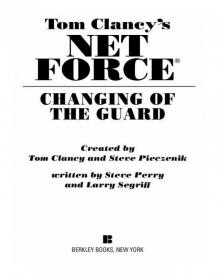 Changing of the Guard
Changing of the Guard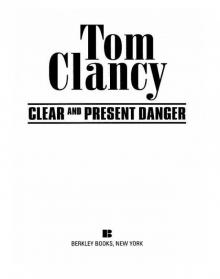 Clear and Present Danger
Clear and Present Danger Hounds of Rome
Hounds of Rome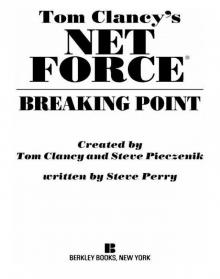 Breaking Point
Breaking Point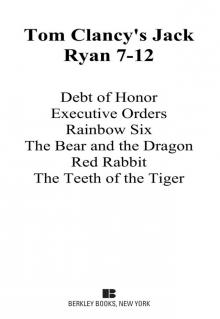 Tom Clancy's Jack Ryan Books 7-12
Tom Clancy's Jack Ryan Books 7-12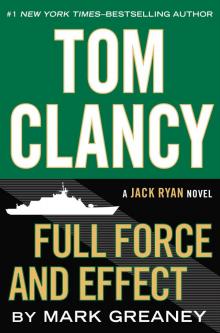 Full Force and Effect
Full Force and Effect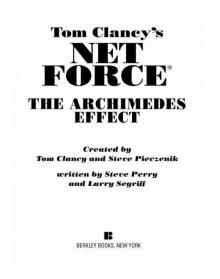 The Archimedes Effect
The Archimedes Effect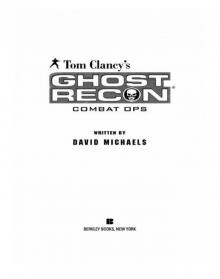 Combat Ops
Combat Ops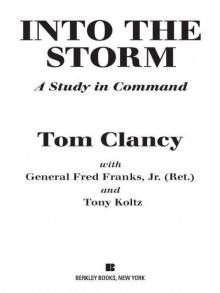 Into the Storm: On the Ground in Iraq
Into the Storm: On the Ground in Iraq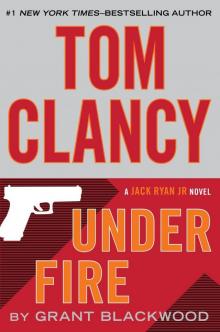 Under Fire
Under Fire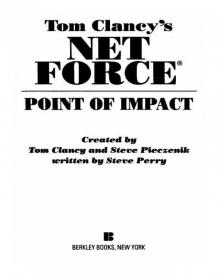 Point of Impact
Point of Impact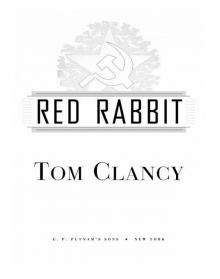 Red Rabbit
Red Rabbit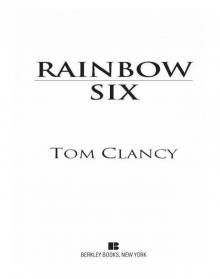 Rainbow Six
Rainbow Six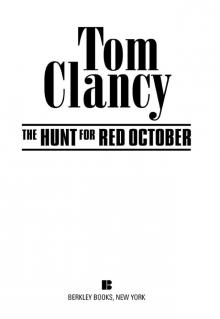 The Hunt for Red October
The Hunt for Red October The Teeth of the Tiger
The Teeth of the Tiger Conviction (2009)
Conviction (2009)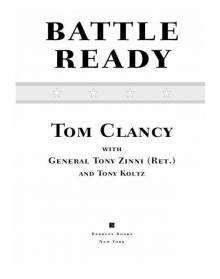 Battle Ready
Battle Ready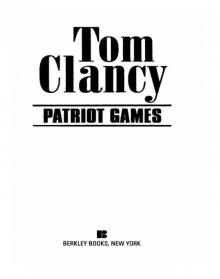 Patriot Games
Patriot Games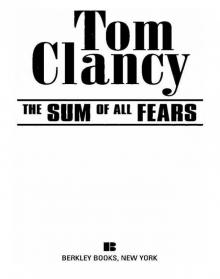 The Sum of All Fears
The Sum of All Fears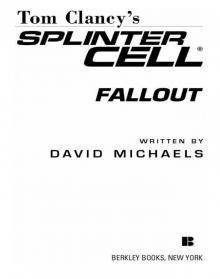 Fallout (2007)
Fallout (2007)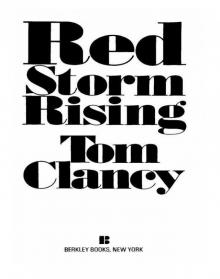 Red Storm Rising
Red Storm Rising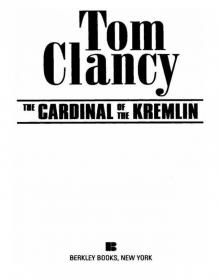 The Cardinal of the Kremlin
The Cardinal of the Kremlin Executive Orders
Executive Orders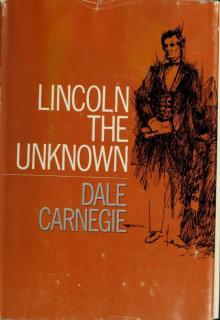 Lincoln, the unknown
Lincoln, the unknown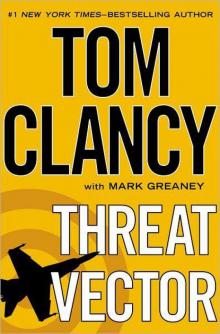 Threat Vector
Threat Vector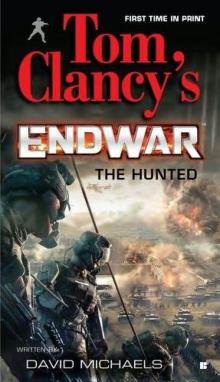 The Hunted
The Hunted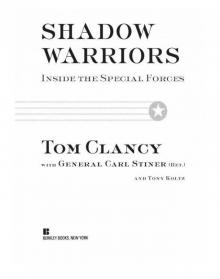 Shadow Warriors: Inside the Special Forces
Shadow Warriors: Inside the Special Forces End Game
End Game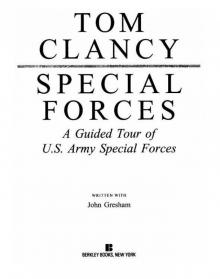 Special Forces: A Guided Tour of U.S. Army Special Forces
Special Forces: A Guided Tour of U.S. Army Special Forces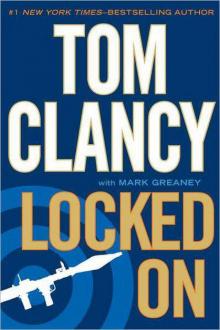 Locked On
Locked On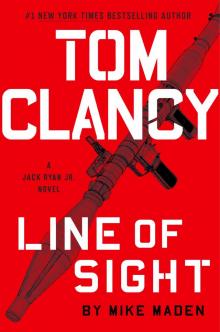 Line of Sight
Line of Sight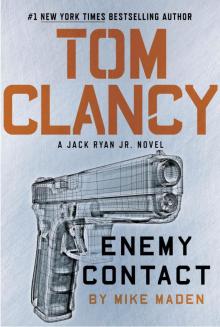 Tom Clancy Enemy Contact - Mike Maden
Tom Clancy Enemy Contact - Mike Maden Fighter Wing: A Guided Tour of an Air Force Combat Wing
Fighter Wing: A Guided Tour of an Air Force Combat Wing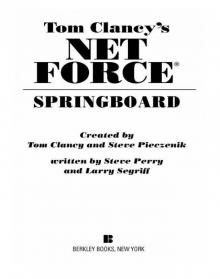 Springboard
Springboard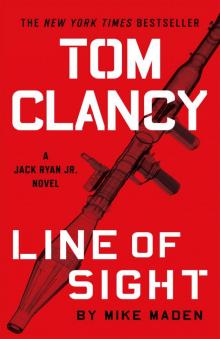 Line of Sight - Mike Maden
Line of Sight - Mike Maden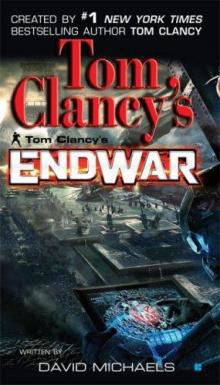 EndWar
EndWar Dead or Alive
Dead or Alive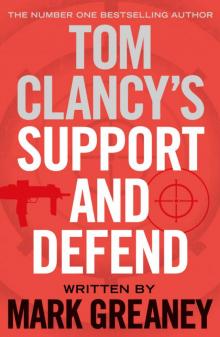 Tom Clancy Support and Defend
Tom Clancy Support and Defend Checkmate
Checkmate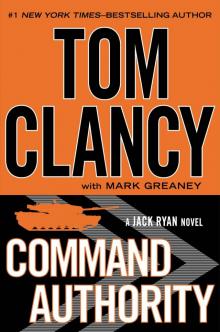 Command Authority
Command Authority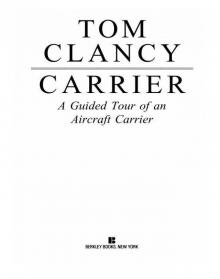 Carrier: A Guided Tour of an Aircraft Carrier
Carrier: A Guided Tour of an Aircraft Carrier Blacklist Aftermath
Blacklist Aftermath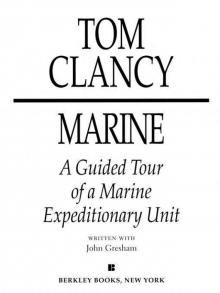 Marine: A Guided Tour of a Marine Expeditionary Unit
Marine: A Guided Tour of a Marine Expeditionary Unit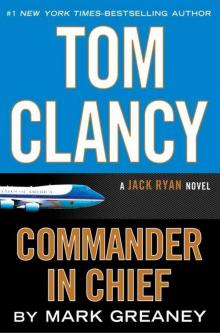 Commander-In-Chief
Commander-In-Chief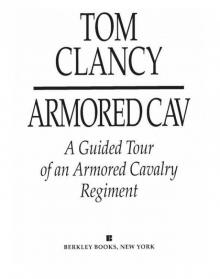 Armored Cav: A Guided Tour of an Armored Cavalry Regiment
Armored Cav: A Guided Tour of an Armored Cavalry Regiment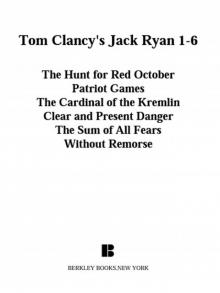 Tom Clancy's Jack Ryan Books 1-6
Tom Clancy's Jack Ryan Books 1-6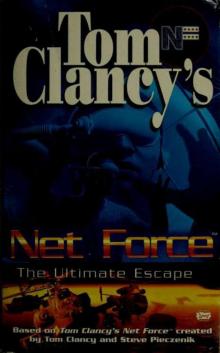 The Ultimate Escape
The Ultimate Escape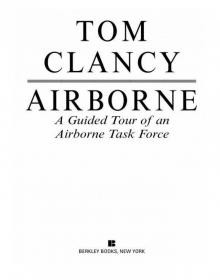 Airborne: A Guided Tour of an Airborne Task Force
Airborne: A Guided Tour of an Airborne Task Force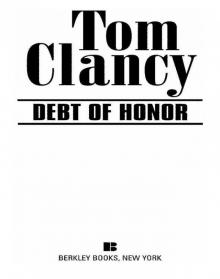 Debt of Honor
Debt of Honor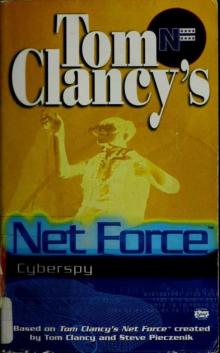 Cyberspy
Cyberspy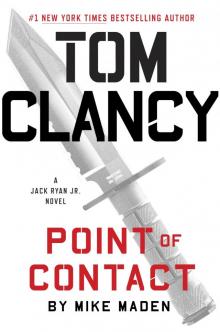 Point of Contact
Point of Contact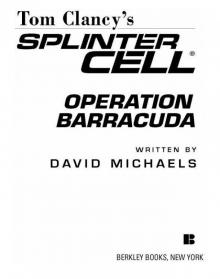 Operation Barracuda (2005)
Operation Barracuda (2005)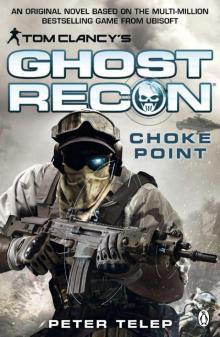 Choke Point
Choke Point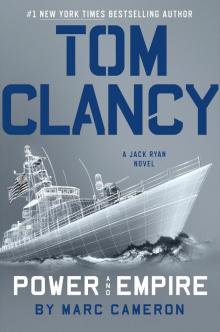 Power and Empire
Power and Empire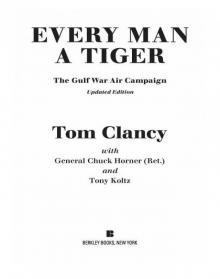 Every Man a Tiger: The Gulf War Air Campaign
Every Man a Tiger: The Gulf War Air Campaign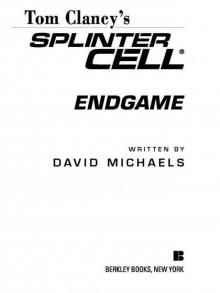 Endgame (1998)
Endgame (1998)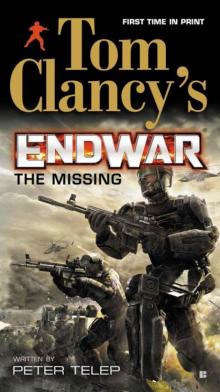 EndWar: The Missing
EndWar: The Missing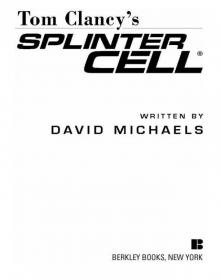 Splinter Cell (2004)
Splinter Cell (2004)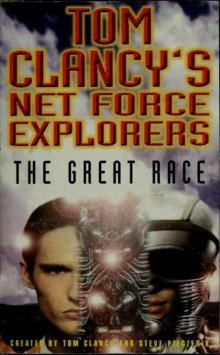 The Great Race
The Great Race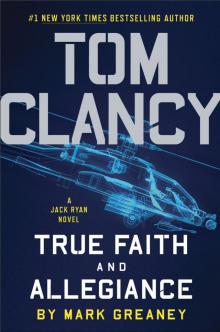 True Faith and Allegiance
True Faith and Allegiance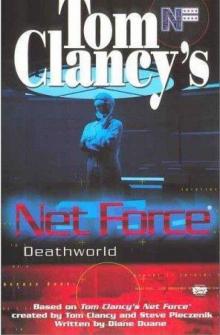 Deathworld
Deathworld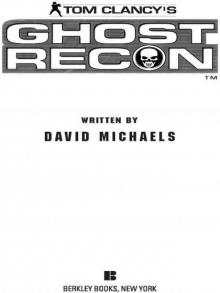 Ghost Recon (2008)
Ghost Recon (2008)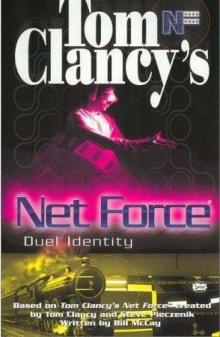 Duel Identity
Duel Identity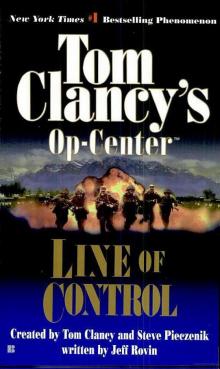 Line of Control o-8
Line of Control o-8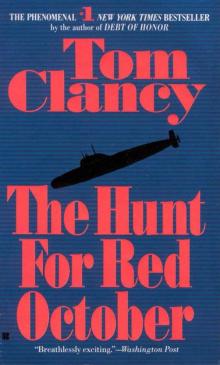 The Hunt for Red October jr-3
The Hunt for Red October jr-3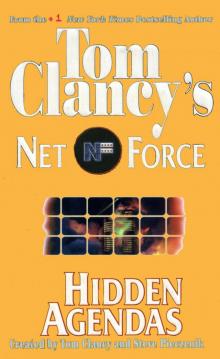 Hidden Agendas nf-2
Hidden Agendas nf-2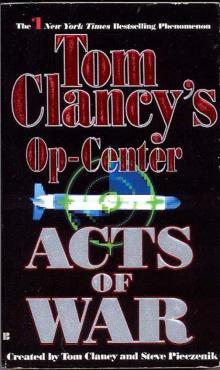 Acts of War oc-4
Acts of War oc-4 Ruthless.Com pp-2
Ruthless.Com pp-2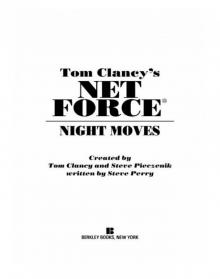 Night Moves
Night Moves The Hounds of Rome - Mystery of a Fugitive Priest
The Hounds of Rome - Mystery of a Fugitive Priest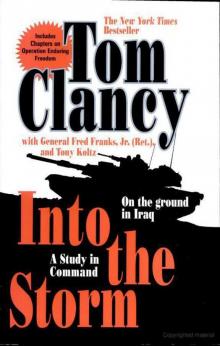 Into the Storm: On the Ground in Iraq sic-1
Into the Storm: On the Ground in Iraq sic-1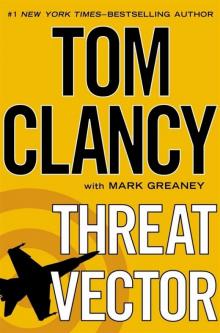 Threat Vector jrj-4
Threat Vector jrj-4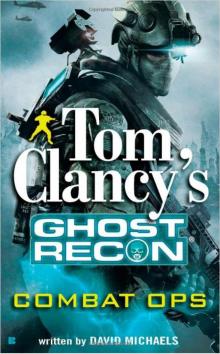 Combat Ops gr-2
Combat Ops gr-2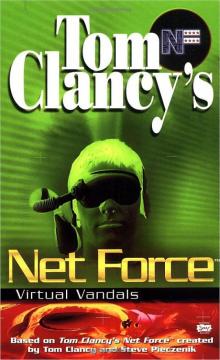 Virtual Vandals nfe-1
Virtual Vandals nfe-1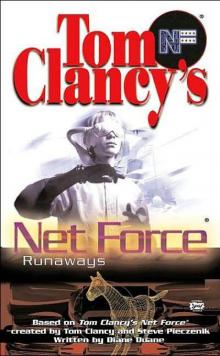 Runaways nfe-16
Runaways nfe-16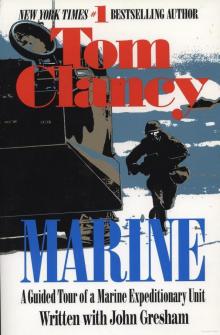 Marine: A Guided Tour of a Marine Expeditionary Unit tcml-4
Marine: A Guided Tour of a Marine Expeditionary Unit tcml-4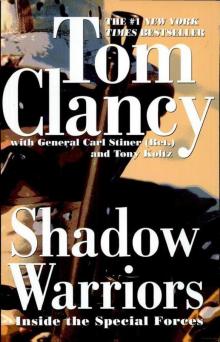 Shadow Warriors: Inside the Special Forces sic-3
Shadow Warriors: Inside the Special Forces sic-3 Jack Ryan Books 1-6
Jack Ryan Books 1-6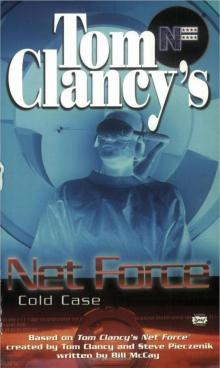 Cold Case nfe-15
Cold Case nfe-15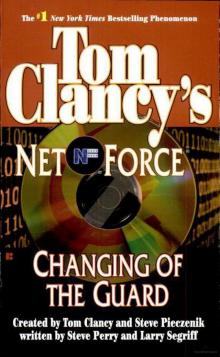 Changing of the Guard nf-8
Changing of the Guard nf-8 Splinter Cell sc-1
Splinter Cell sc-1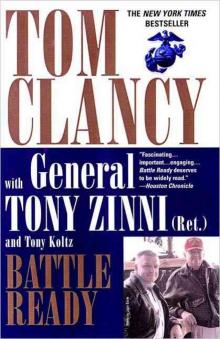 Battle Ready sic-4
Battle Ready sic-4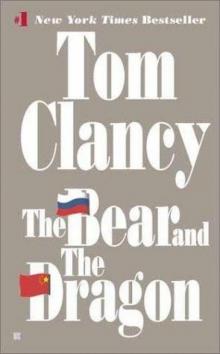 The Bear and the Dragon jrao-11
The Bear and the Dragon jrao-11 Fighter Wing: A Guided Tour of an Air Force Combat Wing tcml-3
Fighter Wing: A Guided Tour of an Air Force Combat Wing tcml-3 Patriot Games jr-1
Patriot Games jr-1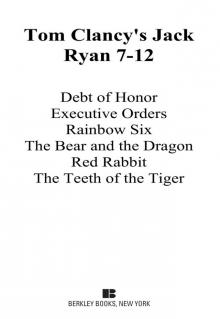 Jack Ryan Books 7-12
Jack Ryan Books 7-12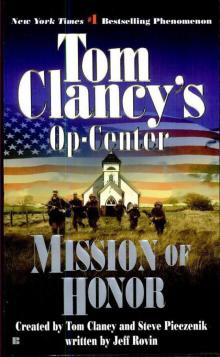 Mission of Honor o-9
Mission of Honor o-9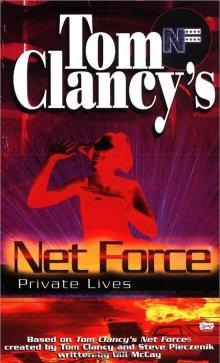 Private Lives nfe-9
Private Lives nfe-9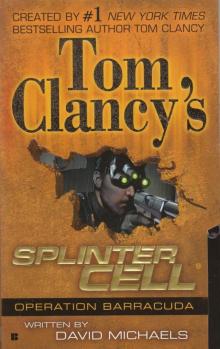 Operation Barracuda sc-2
Operation Barracuda sc-2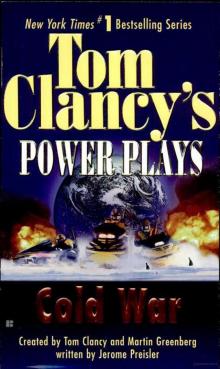 Cold War pp-5
Cold War pp-5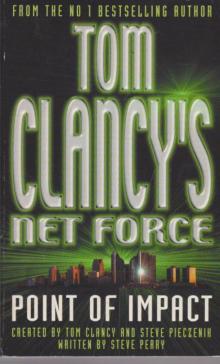 Point of Impact nf-5
Point of Impact nf-5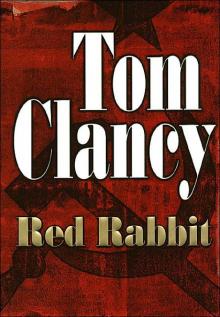 Red Rabbit jr-9
Red Rabbit jr-9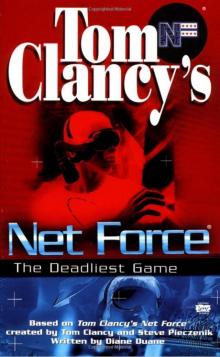 The Deadliest Game nfe-2
The Deadliest Game nfe-2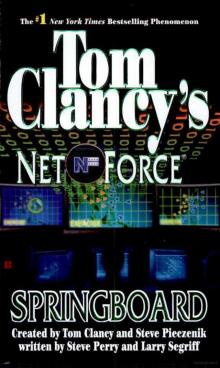 Springboard nf-9
Springboard nf-9 Safe House nfe-10
Safe House nfe-10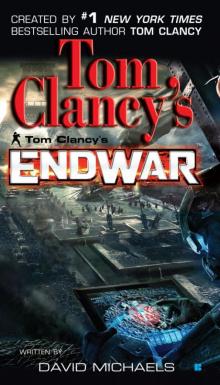 EndWar e-1
EndWar e-1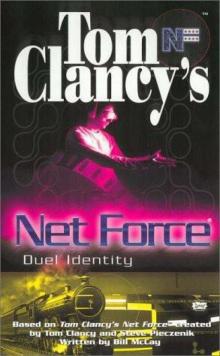 Duel Identity nfe-12
Duel Identity nfe-12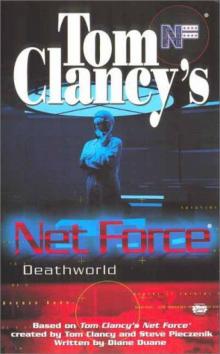 Deathworld nfe-13
Deathworld nfe-13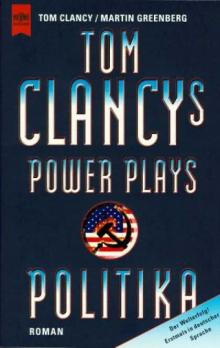 Politika pp-1
Politika pp-1 Rainbow Six jr-9
Rainbow Six jr-9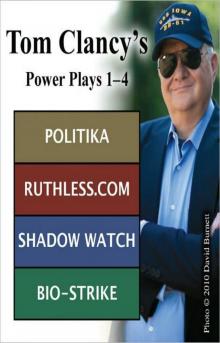 Tom Clancy's Power Plays 1 - 4
Tom Clancy's Power Plays 1 - 4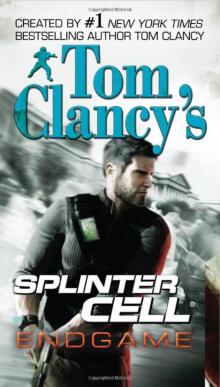 Endgame sc-6
Endgame sc-6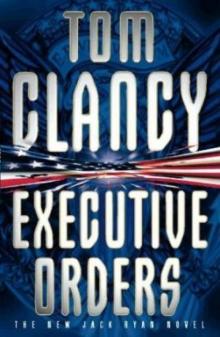 Executive Orders jr-7
Executive Orders jr-7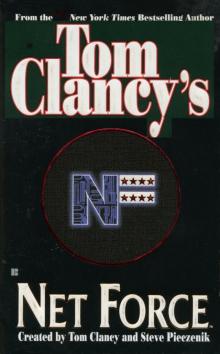 Net Force nf-1
Net Force nf-1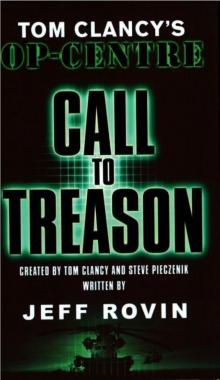 Call to Treason o-11
Call to Treason o-11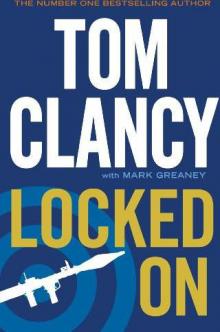 Locked On jrj-3
Locked On jrj-3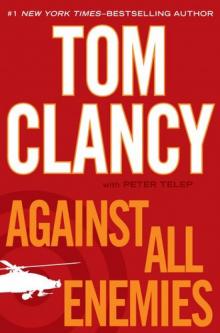 Against All Enemies
Against All Enemies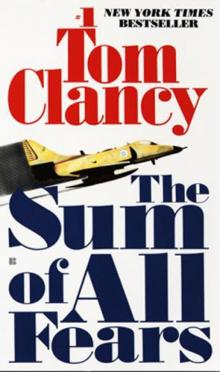 The Sum of All Fears jr-7
The Sum of All Fears jr-7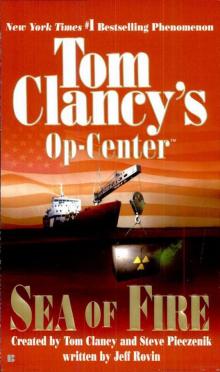 Sea of Fire o-10
Sea of Fire o-10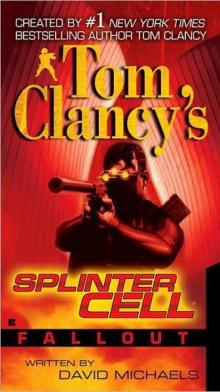 Fallout sc-4
Fallout sc-4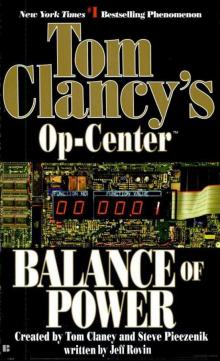 Balance of Power o-5
Balance of Power o-5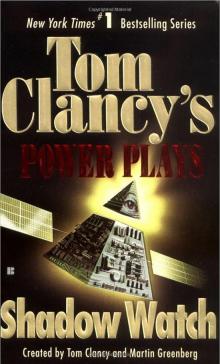 Shadow Watch pp-3
Shadow Watch pp-3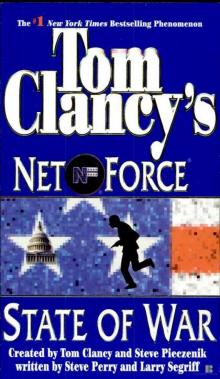 State of War nf-7
State of War nf-7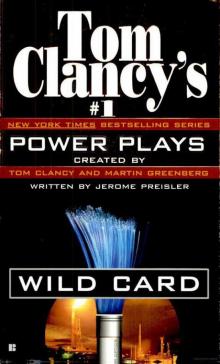 Wild Card pp-8
Wild Card pp-8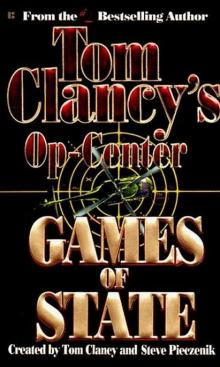 Games of State o-3
Games of State o-3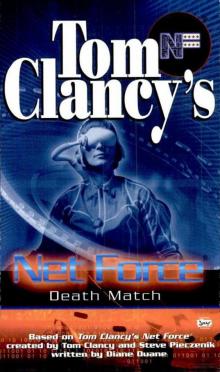 Death Match nfe-18
Death Match nfe-18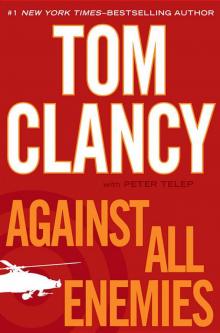 Against All Enemies mm-1
Against All Enemies mm-1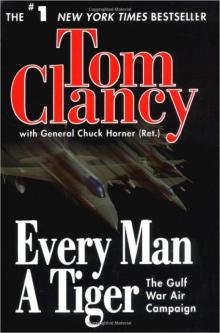 Every Man a Tiger: The Gulf War Air Campaign sic-2
Every Man a Tiger: The Gulf War Air Campaign sic-2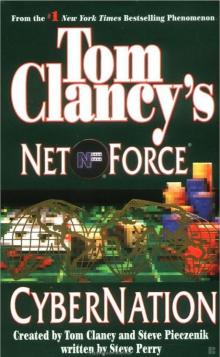 Cybernation nf-6
Cybernation nf-6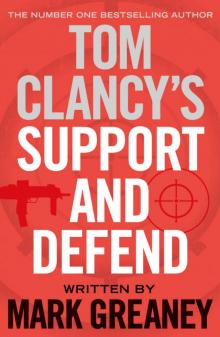 Support and Defend
Support and Defend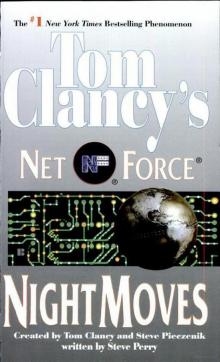 Night Moves nf-3
Night Moves nf-3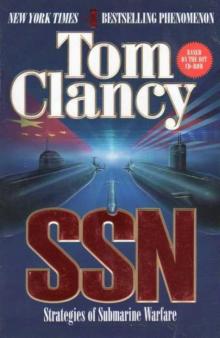 SSN
SSN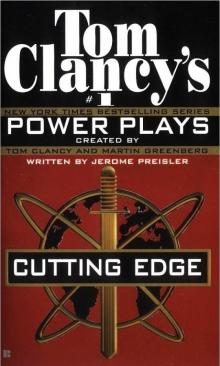 Cutting Edge pp-6
Cutting Edge pp-6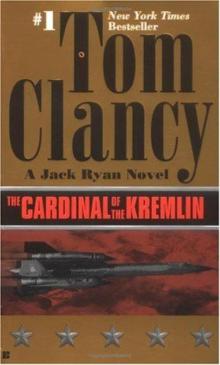 The Cardinal of the Kremlin jrao-5
The Cardinal of the Kremlin jrao-5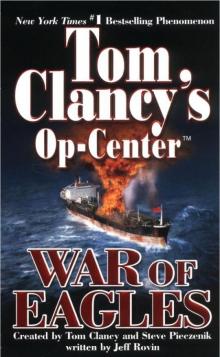 War of Eagles o-12
War of Eagles o-12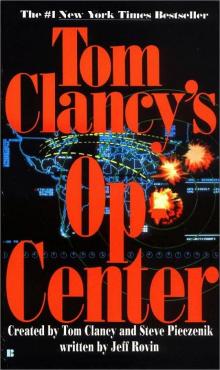 Op-Center o-1
Op-Center o-1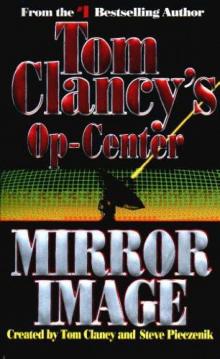 Mirror Image o-2
Mirror Image o-2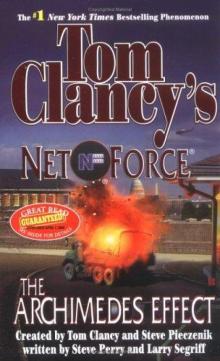 The Archimedes Effect nf-10
The Archimedes Effect nf-10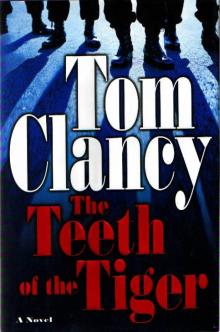 Teeth of the Tiger jrj-1
Teeth of the Tiger jrj-1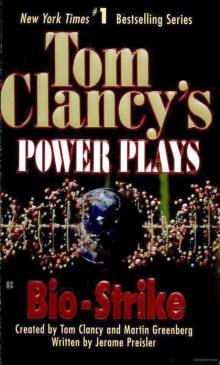 Bio-Strike pp-4
Bio-Strike pp-4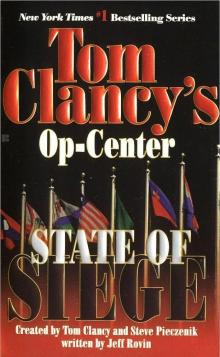 State of Siege o-6
State of Siege o-6 Debt of Honor jr-6
Debt of Honor jr-6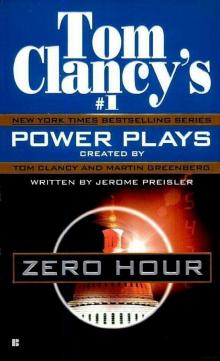 Zero Hour pp-7
Zero Hour pp-7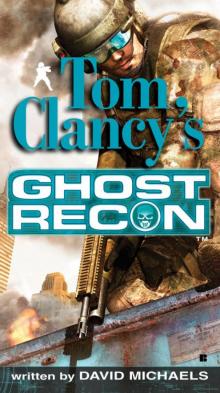 Ghost Recon gr-1
Ghost Recon gr-1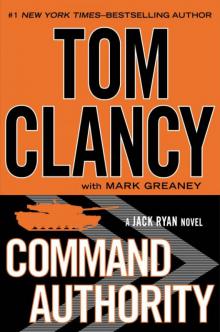 Command Authority jr-10
Command Authority jr-10 Tom Clancy's Power Plays 5 - 8
Tom Clancy's Power Plays 5 - 8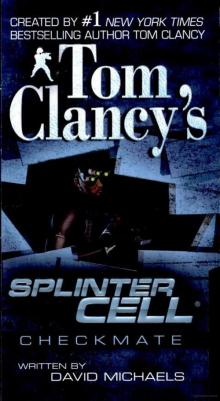 Checkmate sc-3
Checkmate sc-3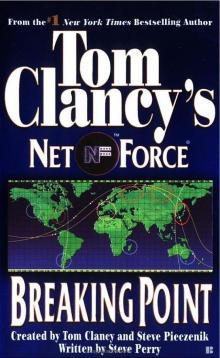 Breaking Point nf-4
Breaking Point nf-4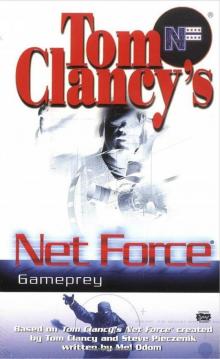 Gameprey nfe-11
Gameprey nfe-11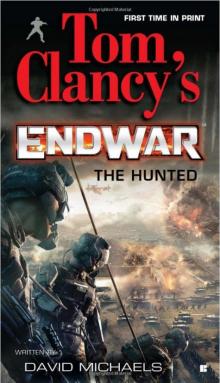 The Hunted e-2
The Hunted e-2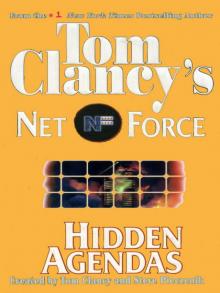 Hidden Agendas
Hidden Agendas Divide and Conquer o-7
Divide and Conquer o-7